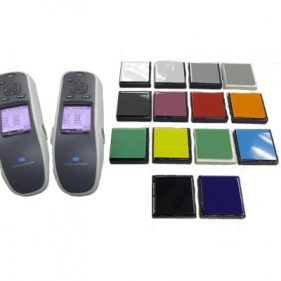What Is Inter-Instrument Agreement?

The coordination and communication of a sample or product color specification can be tedious when multiple plants or suppliers are involved. This is further escalated when different color measuring instrument models are used across these locations. This can potentially result in costly rework, waste, and rejects, hence, the use of similar color measuring instrument with good Inter-Instrument Agreement (IIA) is recommended to ensure color consistency.
IIA, expressed in Delta E (∆E*ab), is a measure of how close two or more colors measuring instruments of similar model will read the same color. The IIA value is obtained firstly by measuring the 12 BCRA color tiles set plus a black and white tile. Next, it calculates and average the color difference by comparing the values against the values measured using a “master” instrument. The smaller the IIA value, the closer the measurement results will be.
Besides having color measuring instruments with good IIA, establishing a standardization in measurement procedures and conditions is equally important in ensuring color consistency. The following points should be defined, documented and shared internally or throughout the supply chain to make color measurement meaningful.
- Instrument’s model and geometry
- Standard illuminant(s)
- Standard observer of either 10° or 2°
- Color space and color difference formula
- Procedures for preparing and presenting of sample
- Lighting conditions for visual evaluations
สามารถติดต่อสอบถามข้อมูลเพิ่มเติมพร้อมการสาธิตการใช้งานเครื่อง Rhopoint IQ Flex 20
Contact us for a free product demonstration.

